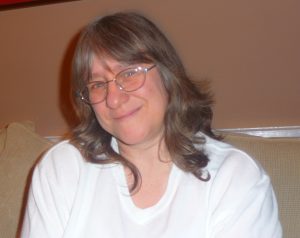Write On! Features: Encouraging The Future Of Writing by Jilly Henderson-Long
By Jilly Henderson-Long
Safeguarding The Future Of Writing
Jilly wrote her first book at age seven. Her first published piece came when she was 12. As well as running Creative Writing groups, her work has appeared across a wide range of media. She’s published three children’s books and several poetry collections. Her hobbies include photography and reading. She lives in Westcliff-on-Sea with her husband Steve. They have eight grandchildren.
 Creative Writing is, for the most part, one of the easiest and cheapest hobbies to get into. It can be done at any time, anywhere, and needs no special equipment, no expensive team kits, not even a specific venue! I began to write at a very young age and had a mother who always encouraged that interest. My first published piece at the age of 12 was a book review in a school magazine. Within four years, I’d been published in several local and national publications, getting my first commission at 16. Now in my mid-60s, I get an enormous thrill from seeing my seven-year-old grandson sit down to write, recently producing his first ‘book’, which won him a certificate at school.
Creative Writing is, for the most part, one of the easiest and cheapest hobbies to get into. It can be done at any time, anywhere, and needs no special equipment, no expensive team kits, not even a specific venue! I began to write at a very young age and had a mother who always encouraged that interest. My first published piece at the age of 12 was a book review in a school magazine. Within four years, I’d been published in several local and national publications, getting my first commission at 16. Now in my mid-60s, I get an enormous thrill from seeing my seven-year-old grandson sit down to write, recently producing his first ‘book’, which won him a certificate at school.
I’ve always encouraged people to try their hand at writing, by doing workshops for seven-10-year-olds (always oversubscribed), running courses for adults, and appearing at local schools as Writer-in-Residence, so when the opportunity presented itself in 2012 to start a Creative Writing group specifically for children, I grabbed it with both hands, threw myself into it head-first and began to research how it could be done. Yet an extensive search on the internet brought no results. Inputting Creative Writing Groups brought forth endless possibilities for grown-ups. Inputting Creative Writing Groups For Children brought nothing, so I had to assume it had never been done before. This presented a challenge; one I clearly had to workout for myself. Starting at target age-groups, I decided on seven-11-year-olds. Now consider the context: how long should a session be? How often should the sessions take place? Fortunately, a local coffee-shop owner had offered her premises as a venue, so I didn’t have to worry about that. But the biggest challenge was how to keep the children interested.
Enter my teacher-daughter. I had a chat with her and she told me about the ‘two stars and a wish’ system she’d introduced at her school. She explained that, in this way, two positive responses could be given to a child’s piece of work, and a wish could indicate how it could be done better next time. This was a great idea for individual pieces of work, but I was rather hoping the group would be long-term and wasn’t sure whether repeatedly issuing ‘two stars and a wish’ would really cut it with your average seven- 11-year-old! So I hit upon the idea of a similar system of reward to those in judo and karate groups: not different coloured belts, obviously, but different coloured certificates to mark their progress.
I ran this idea past the lady whose coffee shop we were going to use, who had two children interested in writing, which had set the ball rolling in the first place. She thought it would work brilliantly, so I then sat down and worked out how far we could go with it. Obviously, the key would be planning. We decided that every other Wednesday straight from school would be a good time to run the sessions. I worked out three months’ worth of topics, stocked up on writing paper and pencils, and informed the local papers about our intentions. I informed local schools and had local shops put up posters, and the rest, as they say, is history.
Addiscombe Young Writers ran very successfully for the next six years. During that time, I ran internal competitions and kept the youngsters informed about other Creative Writing competitions I came across. The Certificate Trail was a great success. The children earned a Blue one just for joining, a Red one on delivery of their first four assignments, Green on the next four and so on, up to and including the Special Award Certificate. Some really ambitious youngsters worked their way through all the colour certificates twice, thus earning prizes and trophies. A number of children stayed the full six years, even after the venue was changed to the local library. We produced three booklets of work, had work exhibited at the library and, to mark our fifth anniversary, the library allowed us to host an event with local writers and the Deputy Mayor in attendance. I even organised trips to the theatre and a local fire station, with one of the most enduring events being the annual Picnic In The Park.
I’m proud to say that over a hundred children passed through the group in the six years it ran. It was an amazing experience. I still hear from some of the young writers and am so pleased they’ve continued to follow their Creative Writing dream. Yes, it was a challenge and yes, it was hard work, calling for total commitment. But it was so worth it. Even now, four years on from the group’s closure, it’s my desire to see other such groups set up. At least, in my own way, I can say I’ve played my part in safeguarding the future of writing!
*****
Read the latest issue of Write On! (15) magazine online here.
You can hear great new ideas, creative work and writing tips on Write On! Audio. Find us on all major podcast platforms, including Apple and Google Podcasts and Spotify. Type Pen to Print into your browser and look for our logo or find us on Anchor FM.
*****
If you or someone you know has been affected by issues covered in our pages, please see the relevant link below for information, advice and support: https://pentoprint.org/about/advice-support/
Creative Writing is, for the most part, one of the easiest and cheapest hobbies to get into. It can be done at any time, anywhere, and needs no special equipment, no expensive team kits, not even a specific venue!




